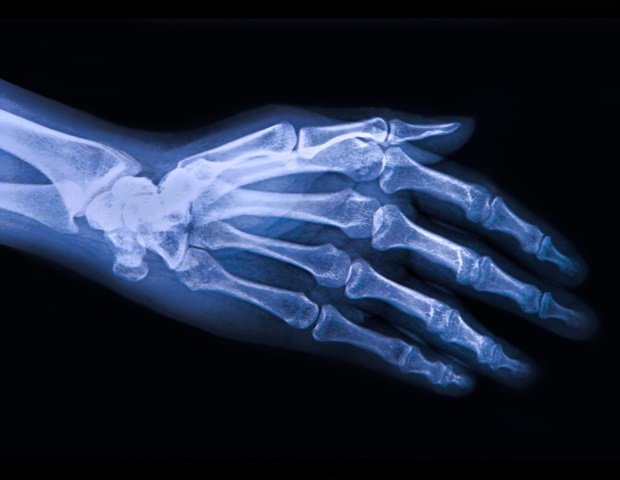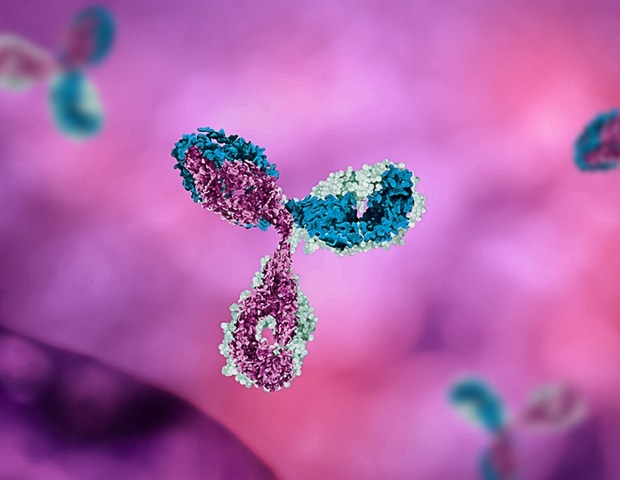Researchers identify gliocidin, a blood-brain barrier-penetrating prodrug, that targets glioblastoma's unique metabolic vulnerability, offering a promising therapeutic strategy and extended survival in preclinical models.
 Study: Gliocidin is a nicotinamide-mimetic prodrug that targets glioblastoma. Image Credit: April stock/Shutterstock.com
Study: Gliocidin is a nicotinamide-mimetic prodrug that targets glioblastoma. Image Credit: April stock/Shutterstock.com
In a recent study published in Nature, a team led by researchers from Memorial Sloan Kettering Cancer Center investigated the effects of the compound gliocidin in targeting glioblastoma, an aggressive form of brain tumor.
The study found that gliadin acts on specific cellular pathways to selectively kill glioblastoma cells without harming normal cells. Moreover, the compound can penetrate the blood-brain barrier, which highlights its potential as a treatment option for glioblastoma.
Background
Glioblastoma is one of the most lethal forms of brain cancer and is known for its resistance to standard therapies. Despite significant advances in cancer therapies, currently used immunotherapies and targeted therapies have had minimal success in improving survival rates in glioblastoma. This resistance is believed to stem from several challenges unique to glioblastoma, such as its complex cellular heterogeneity and immune-evasive characteristics.
Additionally, crossing the blood-brain barrier to reach tumor cells remains a significant obstacle. Researchers are exploring novel metabolic pathways as potential therapeutic targets. Unlike typical cancer drugs that inhibit cell division, some emerging therapies aim to disrupt cancer-specific vulnerabilities. The use of prodrugs, which are converted into active drugs within the body, is gaining special attention due to their ability to target malignant cells while sparing healthy tissue selectively.
About the study
In the present study, the researchers aimed to identify a compound that could selectively target glioblastoma cells. A high-throughput chemical screen of over 200,000 compounds was conducted using low-passage glioblastoma cells derived from genetically engineered mouse models. Compounds toxic to normal replicative cells were excluded. The screening identified gliocidin as a promising candidate due to its selective toxicity against glioblastoma cells.
To investigate the mechanism of action, the team then employed multiple experimental approaches. Genetic analyses were performed using clustered regularly interspaced short palindromic repeats (CRISPR)-CRISPR-associated protein 9 (Cas9) screens to identify pathways and enzymes essential for the activity of gliocidin.
Pharmacokinetics and biodistribution studies in animal models were used to determine the ability of gliocidin to cross the blood-brain barrier and maintain effective concentrations in the brain. The researchers used glioblastoma-bearing mouse models to test the brain penetration abilities and bioavailability of gliocidin. Drug administration was optimized using intraperitoneal injection, and tissue analysis was used to confirm its presence in the brain.
Additionally, the researchers used liquid chromatography-mass spectrometry (LC-MS) to measure the levels of intermediate compounds and final metabolites in cells and tissues to understand gliocidin metabolism.
Structural studies, including cryo-electron microscopy, were also conducted to characterize the interaction between the active form of gliocidin, gliocidin-adenine dinucleotide (GAD), and the enzyme inosine monophosphate dehydrogenase 2 (IMPDH2), to understand the binding mechanisms involved in gliocidin activation and metabolism. Gliocidin was also tested in combination with temozolomide, a standard chemotherapeutic for glioblastoma, to evaluate potential synergistic effects.
Results
The study found that gliocidin effectively targeted glioblastoma cells by exploiting specific metabolic vulnerabilities of the cancer cells. Gliocidin was metabolized into GAD within the NAD+ salvage pathway, which then indirectly inhibited IMPDH2, a key enzyme in the purine synthesis pathway. This inhibition was found to lead to a severe reduction in guanine nucleotide levels, causing replication stress and cell death in glioblastoma cells.
Furthermore, the biochemical assays confirmed that gliocidin selectively disrupted guanine nucleotide synthesis in glioblastoma cells without affecting normal cells. The study demonstrated this specificity across multiple glioblastoma cell lines and patient-derived xenograft models. Additionally, the pharmacokinetic studies revealed that gliocidin successfully crossed the blood-brain barrier and accumulated in the brain, ensuring sustained exposure of the cancer cells to the compound.
Moreover, the in vivo studies in glioblastoma-bearing mice also showed that gliocidin monotherapy significantly suppressed tumor progression. When combined with temozolomide, a standard glioblastoma treatment, gliocidin produced synergistic effects, leading to greater tumor reduction and improved survival outcomes. An analysis of tumor samples from treated mice revealed that the combination therapy enhanced glioblastoma cell death by targeting both proliferative and non-proliferative tumor cells.
The researchers also found that gliocidin’s efficacy depended on nicotinamide nucleotide adenylyltransferase 1 or NMNAT1, an enzyme in the NAD+ salvage pathway. Tumors with higher NMNAT1 expression showed greater sensitivity to gliocidin. Interestingly, combination therapy with temozolomide was found to increase NMNAT1 expression further, amplifying the anti-tumor effects of gliocidin.
Conclusions
Overall, the results established that gliocidin could selectively kill glioblastoma cells by disrupting critical nucleotide synthesis pathways. Its ability to penetrate the brain highlights its potential as a promising treatment for glioblastoma.
Furthermore, the enhanced efficacy observed when gliocidin was administered in combination with temozolomide further supports the potential of gliocidin as a future therapeutic approach for glioblastoma patients.
Journal reference:
- Chen, Y.J., Iyer, S. V., Hsieh, D.C.C., Li, B., Elias, H.K., Wang, T., Li, J.,… Parada, L.F. 2024. Gliocidin is a nicotinamide-mimetic prodrug that targets glioblastoma. Nature. doi: 10.1038/s41586-024-08224-z https://www.nature.com/articles/s41586-024-08224-z

 3 hours ago
1
3 hours ago
1















.png)

.png)
.png)
.png)













 English (US) ·
English (US) ·  Hindi (IN) ·
Hindi (IN) ·